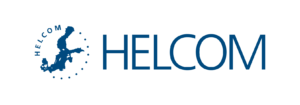BALTHAZAR
BALTIC HAZARDOUS AND AGRICULTURAL RELEASES REDUCTION
Towards enhanced protection of the Baltic Sea from main land-based threats: reducing agricultural nutrient loading and the risk of hazardous wastes
Introduction
The
overall objective of the BALTHAZAR project was to promote protection of
the Baltic Sea protection from hazardous waste and agricultural
nutrient loading. Implementation of this pilot project in Russia
facilitates the achievement of the environmental objectives of the
hazardous substances and eutrophication segments of the HELCOM Baltic
Sea Action Plan through assistance to the development of national action
plans and prioritization of necessary measures.
The Project aims at reaching this goal by improvement of management of hazardous and agricultural wastes focusing exclusively on St. Petersburg, Leningrad and Kaliningrad Oblasts of the Russian Federation. The project expects to develop comprehensive models to manage hazardous and agricultural waste in Russia as a contribution to the National Implementation Programme for the HELCOM Baltic Sea Action Plan. These include designs for pilot cases for investments adapted to a particular local and sectoral legislative framework. The project maintains close dialogue with Russian authorities and stakeholders to ensure applicability of the projects results and the proposed solutions. Feasibility studies for the selected pilot cases will be developed in coordination with both local authorities and potential international financiers.
Target group of the Project include relevant Russian Federal authorities (Ministry of Natural Resources and Environment, Ministry of Agriculture, Ministry of Regional Development), regional and municipal authorities within the above territories (Governments of St. Petersburg, Leningrad and Kaliningrad Oblasts), as well as the territorial departments of respective federal services and regional and municipal departments and committees for environmental protection, agriculture, water resources. In addition to authorities, industrial (waste-generating and waste management) and agricultural companies, scientific organisations, environmental NGOs and the general public form the project’s target group.
The Project is managed by the Project Implementation Unit (PIU) established in the HELCOM Secretariat. Practical implementation is carried out by the Russian St. Petersburg Public Organisation “Ecology and Business” as the Russian Partner with the help of individually selected consultant consortiums for specific tasks in the two thematic areas of the project.
Two main areas
1. Identification and management of hazardous waste sources
Knowledge on existence of hazardous waste sources gathered and application in time of technically feasible methods is required to minimize the risk of substances leaking into the environment. There is a need to identify and make an inventory on some of the historic solid waste deposits and landfills which are often abandoned or without ownership. This inventory will provide the basis for the identification of management measures. The project could therefore be continued in a second phase with actions to implement technical improvements on selected sites. See the subpage for in-depth information.
2. Reducing agricultural nutrient loading to the Baltic Sea
Reducing agricultural nutrient run-off should be targeted at the sources contributing most to the eutrophication, using measures that are cost-effective and socially sustainable. The pilot project will contribute to enhanced dialogue between the environmental and the agricultural sector aiming for improved management. This will be done through campaigns involving environment and agricultural authorities, as well as farmers’ associations and a number of companies in the farming business. In particular, the project will address the opportunity for energy-efficient and eco-friendly manure management including recycling and processing for agricultural hot spots, represented by animal farms for extensive rearing of cattle, poultry and pigs. See the subpage for in-depth information.

